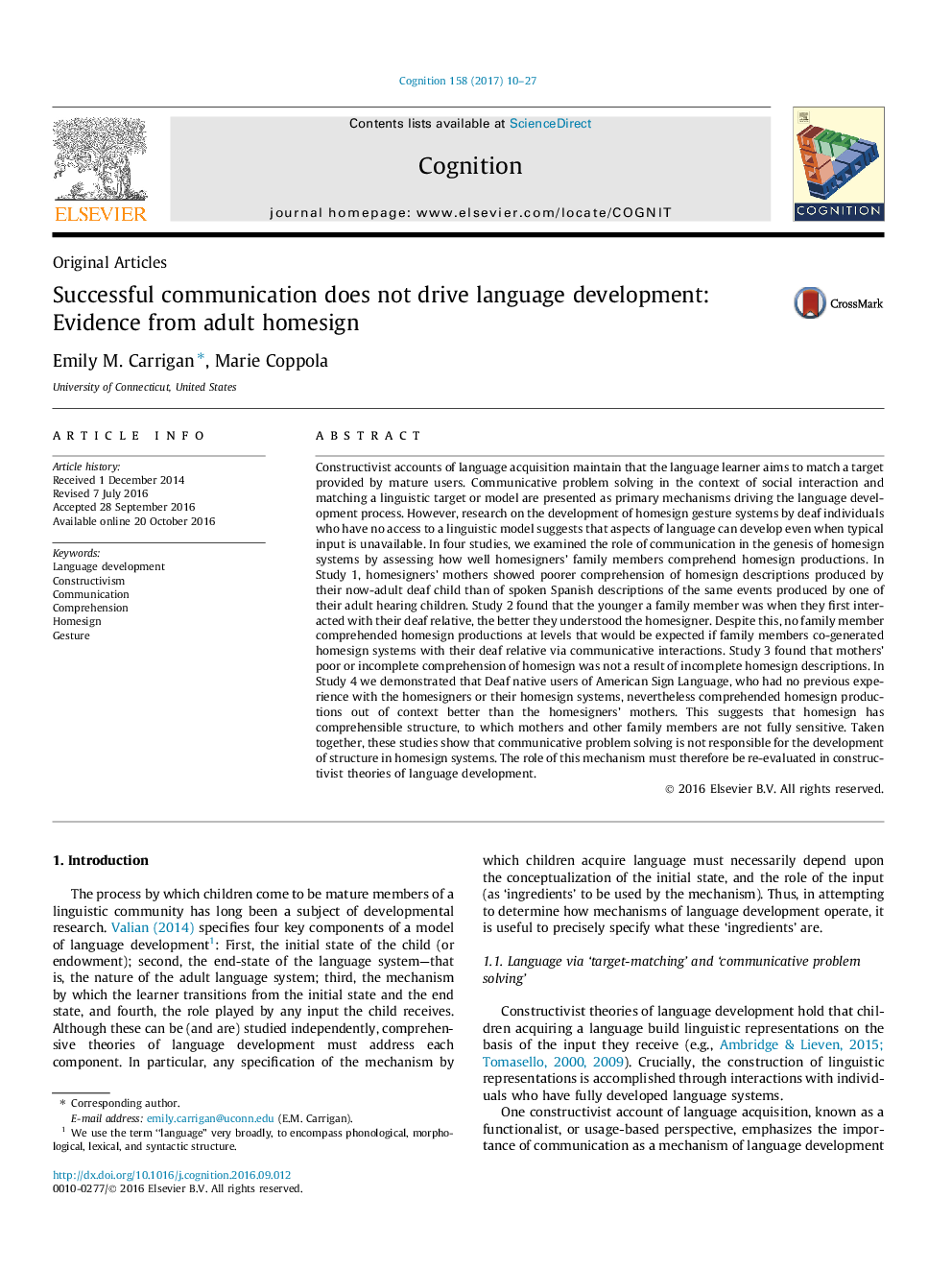| کد مقاله | کد نشریه | سال انتشار | مقاله انگلیسی | نسخه تمام متن |
|---|---|---|---|---|
| 5041678 | 1474109 | 2017 | 18 صفحه PDF | دانلود رایگان |
• Linguistic structure develops in homesign gesture systems developed without a linguistic model.
• Homesigners’ parents and siblings show poor comprehension of homesign productions.
• Structure emerges in homesign despite relatively poor comprehension by family members.
• Communicative problem solving & target matching cannot explain linguistic structure in homesign.
• The role of communication in constructivist accounts of language development must be reevaluated.
Constructivist accounts of language acquisition maintain that the language learner aims to match a target provided by mature users. Communicative problem solving in the context of social interaction and matching a linguistic target or model are presented as primary mechanisms driving the language development process. However, research on the development of homesign gesture systems by deaf individuals who have no access to a linguistic model suggests that aspects of language can develop even when typical input is unavailable. In four studies, we examined the role of communication in the genesis of homesign systems by assessing how well homesigners’ family members comprehend homesign productions. In Study 1, homesigners’ mothers showed poorer comprehension of homesign descriptions produced by their now-adult deaf child than of spoken Spanish descriptions of the same events produced by one of their adult hearing children. Study 2 found that the younger a family member was when they first interacted with their deaf relative, the better they understood the homesigner. Despite this, no family member comprehended homesign productions at levels that would be expected if family members co-generated homesign systems with their deaf relative via communicative interactions. Study 3 found that mothers’ poor or incomplete comprehension of homesign was not a result of incomplete homesign descriptions. In Study 4 we demonstrated that Deaf native users of American Sign Language, who had no previous experience with the homesigners or their homesign systems, nevertheless comprehended homesign productions out of context better than the homesigners’ mothers. This suggests that homesign has comprehensible structure, to which mothers and other family members are not fully sensitive. Taken together, these studies show that communicative problem solving is not responsible for the development of structure in homesign systems. The role of this mechanism must therefore be re-evaluated in constructivist theories of language development.
Journal: Cognition - Volume 158, January 2017, Pages 10–27
